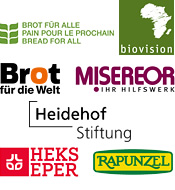News
27.09.2019 | permalink
Farming and food security to be affected by melting ice and rising seas

Melting glaciers and rising sea levels – climate change will have profound consequences for ecosystems and people, if we do not take urgent action in order to limit global warming. Groups with the highest exposure and vulnerability, such as the poor, farmers and indigenous peoples, will be hit hardest since they often are those with the lowest capacity to respond. This is the message of a new special report of the Intergovernmental Panel on Climate Change (IPCC). In a two-year process, more than 100 authors from 36 countries assessed the latest scientific literature related to the ocean and cryosphere (the frozen parts of the planet, including snow cover, glaciers and permafrost). The summary of the report was adopted by the 195 IPCC member governments sentence by sentence on September 24th. “The open sea, the Arctic, the Antarctic and the high mountains may seem far away to many people,” said IPCC Chair Hoesung Lee. “But we depend on them and are influenced by them directly and indirectly in many ways – for weather and climate, for food and water, for energy, trade, transport, recreation and tourism, for health and wellbeing, for culture and identity.”
The report provides new evidence for the benefits of limiting global warming to the lowest possible level. “If we reduce emissions sharply, consequences for people and their livelihoods will still be challenging, but potentially more manageable for those who are most vulnerable,” Lee said. According to the report, a total of 670 million people in high mountain regions, including indigenous peoples, and 680 million people in low-lying coastal zones depend directly on the ocean and the cryosphere. Four million people live permanently in the Arctic region, and small island developing states are home to 65 million people. “The world’s ocean and cryosphere have been ‘taking the heat’ from climate change for decades, and consequences for nature and humanity are sweeping and severe,” said Ko Barrett, Vice-Chair of the IPCC. “The rapid changes to the ocean and the frozen parts of our planet are forcing people from coastal cities to remote Arctic communities to fundamentally alter their ways of life.”
“Global-scale glacier mass loss, permafrost thaw, and decline in snow cover and Arctic sea ice extent are projected to continue in the near-term,” the report warns. Smaller glaciers found for example in Europe, eastern Africa, the tropical Andes and Indonesia are projected to lose more than 80% of their current ice mass by 2100 under high emission scenarios. The Arctic sea ice is declining and getting thinner. If global warming is stabilized at 1.5°C above pre-industrial levels, the Arctic ocean would only be ice-free in September – the month with the least ice – once in every 100 years. For global warming of 2°C, this would occur up to one year in three. Melting ice is also contributing to an increasing rate of sea level rise. While sea level has risen globally by around 15 cm during the 20th century, it is currently rising more than twice as fast – 3.6 mm per year. Sea level projections depend on the climate change scenario used. It could reach around 30-60 cm by 2100 even if greenhouse gas emissions are sharply reduced and global warming is limited to well below 2°C, but around 60-110 cm if emissions continue to increase strongly. Since 1993, the rate of ocean warming has more than doubled. Ocean warming and acidification, loss of oxygen and changes in nutrient supplies, are already affecting marine life in coastal areas, with effects on the people that depend on marine ecosystems.
The consequences for people are severe: “Food and water security have been negatively impacted by changes in snow cover, lake and river ice, and permafrost in many Arctic regions. These changes have disrupted access to, and food availability within, herding, hunting, fishing, and gathering areas, harming the livelihoods and cultural identity of Arctic residents including indigenous populations,” the authors write. Glacier retreat and snow cover changes have contributed to localized declines in agricultural yields in some high mountain regions, including Hindu Kush Himalaya and the tropical Andes. As mountain glaciers retreat, they are also altering water availability and quality downstream, with implications for many sectors such as agriculture and hydropower. In the Indus and Ganges river basins, for example, snow and glacier melt provides enough water to grow food crops to sustain a balanced diet for 38 million people, and supports the livelihoods of 129 million farmers.
The relative poverty of many mountain communities makes them vulnerable to the impacts of cryosphere changes. “High mountains have supported agricultural livelihoods for centuries. Rural communities are dependent on adequate levels of soil moisture at planting time, derived in part in many cases from irrigation water which includes glacier and snow meltwater,” the IPCC explains. The reduction in streamflow has already led to reduced water availability for irrigation of crops and declining agricultural yields in several mountain areas, e.g. in the tropical Andes, High Mountain Asia, and the Rocky Mountains in the US. The report also cites Peru as an example. Peru’s glaciers have shrunk by more than 40% since 1970 due of climate change. Especially in the Cordillera Blanca, glacier coverage has declined significantly, presenting big challenges to farmers and the local population. “Human vulnerability to these hazards is conditioned by factors such as poverty, limited political influence and resources, minimal access to education and healthcare,” the scientists say. They argue that adaptation depends on the capacity of individuals and communities and the resources available to them. The IPCC highlights the urgency of reducing greenhouse gas emissions: “Enabling climate resilience and sustainable development depends critically on urgent and ambitious emissions reductions coupled with coordinated sustained and increasingly ambitious adaptation actions“, the authors conclude. (ab)

